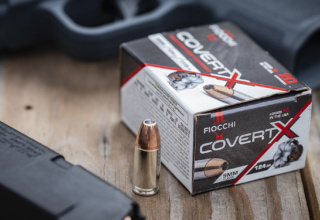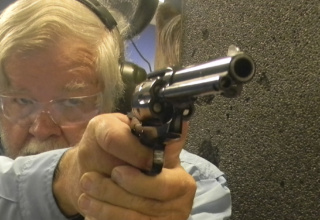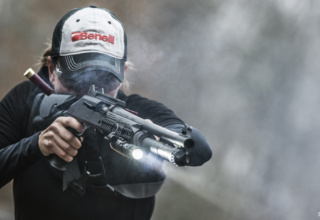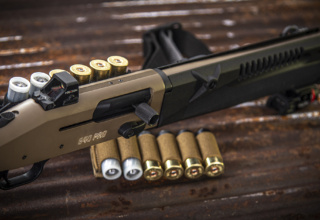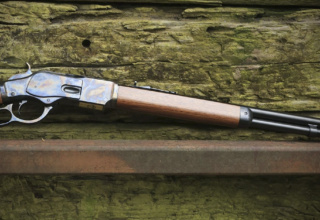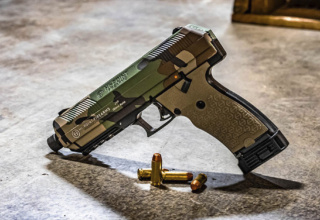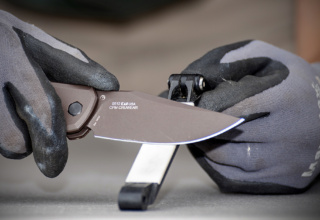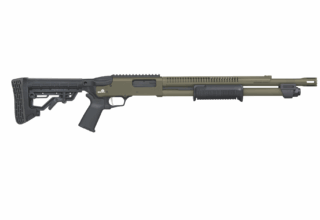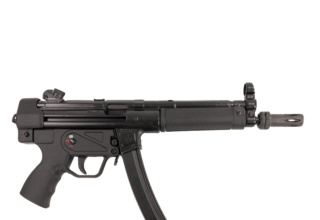Exploring the evolving fiction of gun writing
by Bob Campbell
Some people are never lost but instead keep putting one foot ahead and don’t give up. Others don’t quite reach the destination. I think that “Internet commandos” and “fanboys” as derisive name tags don’t quite carry the weight they used to as there are so many of them.
My frame of reference is such that a higher bar is set. I suppose giants walked the earth when I began reading gun books — all before I could drive. These men had real-world experience. They were of the greatest generation and some of the era before that. Men like Colonel Hatcher, Colonel Cooper, and on the civilian side Skelton and Jordan — although both men had military experience as well. Elmer Keith was a hunter living in what was still arguably a wild country when he wrote much of his work. It is unfortunate that so many young people resort to the Internet and search for answers rather than look to gain their own experience. That’s not to say there aren’t some of my generation who could not change a tire or check the car’s alternator. When Keith and Cooper were growing up, the dumb died young and blowhards were found out easily because the rest had experience.
The men had real police and military experience. When Keith wrote about hunting, it was Hell I Was There, not “this should work.” I have not written about shooting bears because I have not shot a bear. But don’t let that stop you. The world-weary old cop with a Magnum under the coat or a tight-lipped former Marine with a 1911 under the vest, wearing well-worn boots, were the fellows who wrote gun books. There was not a striker-fired .380 in a “man bag” among them.
Then there were the likes of George Nonte and the great P. O. Ackely — gunsmiths extraordinaire. They were not parts changers but gunsmiths. They attended schools, they taught schools, and they actually invented things that worked. Most, if not all, of the part-timers, influencers, and freelancers shouldn’t shine the shoes of these giants, in my opinion.
The late great Tom Ferguson was perhaps the most underrated police writer of all time. He taught me to “add in my opinion” after a bold statement. Perhaps he was right.
In my opinion, the best of these writers exemplified their craft and stimulated a loving and profound attitude toward the shooting sports. Despite long police or military service with many difficulties, they did not find danger lurking behind every tree. Skelton gave me a love of the craft I have kept my entire life and I have not, to this day, surrendered a single part of Cooper’s dogma. They wrote well but had a franker purchase on reality because reality was their central reference. Cooper was easily the best educated of the day among my favorites, but so was Jack O’Connor. And neither padded ignorance with eloquence.
On a side note, Ed McGivern was a popular writer of the 1930s and 1940s who wrote Fast and Fancy Revolver Shooting. He stressed that he made a good living in a field unrelated to shooting and that financed his trick shooting. He used complex timing apparatus. Just the same, he was a pioneer of defense shooting, shooting on the move, and using the handgun’s sights. Chic Gaylord wrote as a sideline and invented many of the prototypes of concealed carry holsters still in use today.
Currently, many sites and writers exist only for entertainment and their own ego. In the past, we had articles on trick shooting usually accompanied by a photo of an aerial target being busted. It took several roles of expensive 35mm film to get this right. There was no photo editing, inserting empty cases in the air. Sometimes, we did extensive testing to prove out a theory.
Full-throttle burnouts are mindless and prove nothing. The same with much of the shooting we see today (if, in fact, the shooting actually took place — of which I am often skeptical). I know what a gun with a few thousand rounds on it looks like. I have had several terrible jobs and a terrible boss or two and I wanted to write to break those chains, but also to save lives and spread good information. I don’t see another ethical goal. This led me to eventually penning a training abstract published on the Federal level, an article in Black Belt magazine, and several thousand articles and over twenty books through the years. Most of my work is concerning personal defense, although I also wrote a goodly amount of curriculum on gunsmithing for Sonora University. I never lost sight of the difference in experience among shooters, and I don’t write down to anyone but rather extend an invitation to learn. You should meet a writer halfway with your own knowledge.
I never worked a SWAT team, although I was the point man on raids and made quite a few arrests on my own of dangerous individuals. An overweight or inexperienced writer posing in SWAT gear is Commando Jelly stuff. I am glad for those willing to put in the rigorous training needed for SWAT. I wonder at the mindset of the fellow with an AR pistol, a 5.7 pistol, and twenty magazines in his SUV. I know the difference between the threat profile of the police military and civilian shooters and respect that and write from my own experience. (Anyone who tells you a pistol is for fighting your way to the long gun has never fought with a pistol. You don’t have that kind of time.)
Most of the off-the-cuff types are writing to hear themselves talk and just don’t get it. As an example, if you spend fifteen seconds deploying your bag-gun carbine, you have already been riddled by the guy with the GLOCK. Just saying. On the other hand, I am not going to tell you the choice of gun isn’t important. The gun is big-time important, and a shooter needs a good tool.
I don’t buy into the “all-calibers are the same” nonsense. Of course they are not. Shot placement is important but caliber is important as well. As Mr. Tom Ferguson said, everyone has a 50/50 chance of dying in a gunfight. Bad advice isn’t going to improve your chances. Gear doesn’t keep you safe, but service grade gear is pretty important. Mindset is as well.
A few months ago, I read a report in one of those “it happened to me” stories in which a young cop drew down on a waterbed that made a sound in a home he was clearing. I cannot imagine anyone I worked with doing such a thing, but then this is another day. Folks are jumpy.
An instructor who delighted in throwing young, strong cops across the mat in his dojo told us, “If you think the gun is there to keep you from getting your butt kicked or for any other reason than to save a life, then you need to hit the door and turn in the badge right now.” I cannot agree more, and quite a few modern shooters need to adopt this rule. And hats off [snark] to the instructor found easily on You Tube who delights in throwing girls around. A slightly built student successfully demonstrating against a larger student would leave me more impressed.
I suppose I made it this far due to a respect for the facts of life. There is a grim organic curve for those who do not. I began as an answer-seeker and an interested literary pilgrim. Appreciation became exposition. Collusion and clumsiness left me many years ago. I had my hard knocks and survived. I realize the statistical virginity of most personal defense writers in that regard. That doesn’t have them avoiding bluster. We need to keep perspective and not preach from the pulpit but get down among the congregation.
I began writing just after the greatest generation began to retire. Cooper was a pope, Keith a rugged bishop, Jordan a knight, Skelton a paladin, and Askins a vicar. Some drank and smoked too much, and some were mean as hell in real life. I once observed a long, lanky former border patrolman bend another writer — an unrepentant sinner — over a table at a gun show over something said in print concerning the other’s bona fides. There were apologies. Today, the fellow sitting in his mom’s basement has no penalty for a lack of civility. Just an observation.
Another observation — my friend Massad and I were talking at a show in Nashville when my wife walked up. She knew we had to speak loudly to be heard — at arm’s length — as we have lost some hearing. She and everyone else heard us talking three rows down, she said. It is funny and I suppose a rite of passage. Your ears harden. Don’t let your mind as well. Massad holds a black belt, and while it isn’t easy and not for everyone, there are options other than pulling a trigger, and he understands this better than most.
I believe that when talented or learned people approach the object — learning and reporting thoroughly concerning testing — their goal should be to serve sincerely to the best of their ability. The result can be gratifying to all concerned. As for myself, my goal is to learn more than my predecessors.
Today, we don’t seem to have that ethical rule. How did we come to this? The purchase of publications by corporate types who don’t like guns and editors who were not shooters but journalists are a couple of reasons. Advertisement-run publications are another. Alas, some buy books for the ads, and that’s OK. Others buy for a look at the newest pistol, and a few for training. A hobbyist publication should be run by those who love the sport, but greed doesn’t love the sport.
About forty years ago, an editor told me my manuscript was OK, but I needed more experience. I didn’t self-publish, which remains an avenue for the self-impressed. I went back to college and took another English course, and I gained more experience as well.
You need experience. Ideally, beginning as a teenager and growing up hunting and shooting is a path. The military is another. Police work…not so much unless you go out of your way to learn.
Meanwhile, I sold a few stories —some to the bottom feeders of the publishing world, long out of business, still owing me for about half the work they published. I finally felt twenty years of shooting experience, a degree in criminal justice, along with real world experience qualified me to publish work. Some were reports, some reviews, a very few opinion pieces, and a handful of hunting articles. In another field, one of my abstracts was published on a Federal Level, and I published scholarly reports on dealing with hate groups on the Internet (I got into that game early). A fellow I arrested who is not worth mentioning by name ended up on the cover of Rolling Stone magazine. I know the value of validity in writing. My reports had to stand up to a judge.
A significant impact on my writing came when I began working with Jack Lewis. I worked with Jack more than twenty years, although we never met in person. Jack was a combat Marine, magazine publisher, and by any standard the real thing. He paid for some stories he trash-canned because he wanted me to keep writing and eventually Jack and I worked on three books for Gun Digest. I could never have written my own books without working with Jack Lewis. He was a great man and we told it like it was when reviewing firearms of all types.
Today…well…a writer can make a new gun sound really cool. As for me, I would rather wear bunny boots with tassels than carry some of the stuff folks wax poetic about. There were harbingers of doom long before the Internet.
I did a handgun leather column at a spin-off of a major magazine. This was a popular column and one I related to the reader well in doing. The average lead time from sending in the story to publication was around three to four months, so the Internet beats us hands-down on that. The new editor — a dapper dresser who never carried a handgun concealed outside the studio in his life — began publishing excerpts of a so -called handgun stopping power study. Eventually, the writer went on to publish a report on a secret goat shooting. I cringed when they mentioned the thoughts of the professional community. Their information included secret sources and unverifiable, unrepeatable assertations. I don’t think those of us in the police writing field had ever heard of them. In other words, their validity was zero and the information was not reliable enough to have been presented in a small-town traffic court.
One of these worthies criticized Colonel Cooper because Cooper pointed out that during the Miami Massacre shootout, one of the felons took a dozen hits. I have studied the official FBI shooting after-action and autopsy reports, and as far as may be determined, the actual total of hits was twelve to fourteen. This fellow criticized Cooper and said that, for certain, there were two 9mm hits that simply failed to penetrate to the heart — could have happened with any caliber. I knew better.
Dean Speir wrote the top scholarly report on this shooting. But the stopping power studies were clandestine stuff. You know, shooting drugged goats. Preposterous in hindsight, but it sold a lot of magazines and that was the bottom line. This once great book was reduced to half its circulation and, whether by such reporting or the dawn of the Internet, I cannot say. Stopping power studies regain a favorite province of rascals to impresses fools. Laboratory testing is the sole arbiter of wound potential.
I was busy raising children but kept writing and concentrated on books. Remember them? Eventually, I wrote more than twenty books. I felt that an author writes books, a writer writes for periodicals. Self-publishing is vanity. I wrote on contract and received royalties from major companies. The digital age gave folks a lot of opportunity to share information. I am not certain conspiracy theories and downright fables disguised as history existed before the Internet, but I suppose they did. Some have lost their sanity over this, but that is another story.
In the print media, a once big deal writer claimed he fired 100,000 rounds of ammunition in Magnum revolvers in a few years, and claims of 1,000 rounds in a weekend promogulated on the web. I reckon this is akin to a sixteen-year-old’s erotic fantasies, but more harmful. Those with shooting experience know how tiring it is to fire a few hundred rounds, and this is both physically and emotionally tiring.
A great thing happened when freedom rang and we began to be able to obtain concealed carry permits across America. CCW was no longer the luxury of the well-heeled, and “ordinary citizens” began to attend shooting classes and obtain permits.
I met a lot of commando jellies and fanboys who were “educated” via the Internet. They showed up with a high-capacity 9mm in a thigh holster and ten to fourteen magazines. I guess that is better than the folks who left their spare magazine at home. Many tried laser sights. They argued with my traditional training but somehow were unable to demonstrate hits with point shooting and instinctive shooting. I suppose their instincts were stunted. They told me everything I already knew.
Most instructors were cops in those days. A few were military. My home state blossomed from two hundred to two thousand instructors. Most of them have no institutional or military experience. All went to NRA schools, which are very good and very consistent. but it isn’t the best situation. A UPS guy and a guy who worked at Kristy Kreme became instructors, within their limitations. Oh well, time for another “in my opinion.”
A few years ago, I read a report by someone who adjusted his tangent-sighted Browning Hi-Power pistol for 200, 300, and 400- yard shooting and found it “pretty accurate.” Within the month of this report, a fellow fired a Ruger Mini 30 at 400-yard plates and claimed good results. Those who have owned a Mini 30 must agree the plates would have to be the size of a Volkswagen. Funny…these gentlemen never seem to mention drop factor in their long-range shooting. They don’t understand drop or perhaps they are hallucinating from too much testosterone. Yes, there is the 5.7 at 300 yards. And, of course, all handguns, including the .380 ACP, are as good as the other…it just depends on where you put the bullet. Some of these cats should be on TV selling free bibles. Just send in a donation and I will send you a free book!
The counter for such drivel is to meet the author with your own experience and consult your own counsel.
One of the bright spots of the modern age is the number of female writers who seem reliable and spot on…save for one who wrote of the “splatter” on target of her shotgun and firing her “assault” rifle. I think, perhaps, this female writer was a figment of an editor’s imagination, as every other female writer seems devoid of excess ego and is tracking straight. In any case, in the same issue, the editor posted the wrong photos to my review of Bill Wilson’s new 9mm pistol and the next thing I know, the book is defunct. At one popular magazine back in the day, no less than six individuals reviewed and proofread each article. I don’t know what happens today in most places, but it is me, myself, the editor, and I doing proofreading. (And my largely unpaid daughter, so let me spread the blame!)
People are not opposed to the facts; they often simply ignore them. They get a little education and think they’re golden. One fellow began the right way by attending Captain Ayoob’s classes. He got enough traction and material to write a few articles, I suppose, for folks who could not afford the genuine article from the real source. I think the original source is much more valid. I don’t begrudge a working journalist his livelihood. He may write about a soccer game one day, a beauty contest the next, and a lighthouse visit the following…or a highway pile up. But some of us like depth on important subjects.
Hunters, as an example, have a good idea of the utility of certain cartridges for game, and if the round won’t do for small game, it certainly won’t do for personal defense. A man is about the same size as a deer and about as hard to put down. I bow to Mr. Dave Fulson’s experience on turkey hunting. (I am not a big turkey hunter, but his work reads well), He mentioned rifle hunting for turkey where legal in the recent Gun Digest and commented the .22 Magnum is too light for tough, old turkeys. I agree. Probably too little for those tough, old heads (ex-convicts) on the street, too. Someone with no experience will argue the point. I think the public, to a large extent, is to blame with its feel-good ministry and devotion to a quick read being responsible for much of the decline in discipleship in their authorities.
They want information FAST; they want to sneak a quick read on the phone at work. I would make a bet that they spend more time researching the next smart phone or the next vehicle than guns and gear. Sure, this gun had a few malfunctions. I bet production guns will be just fine. Sure, it had a failure to fire, but it is cheap. Sure, it is a small caliber, but you probably won’t need it anyway. Sure, carry it chamber empty because you don’t know how to practice the standard response drill anyway. It only cost $299, but it is as good as the GLOCK. That FBI testing is too extravagant…you don’t need that type of performance. Besides, my testing is more valid and my secret sources contradict the FBI’s findings.
The drivel is endless.
I will let you decide whether to walk or run from such advice. Chew on this for a few minutes. We talk about all the bad gun advice but how about bad legal advice? It is a jungle out there and perhaps you need a skeptical attitude more than ever.



